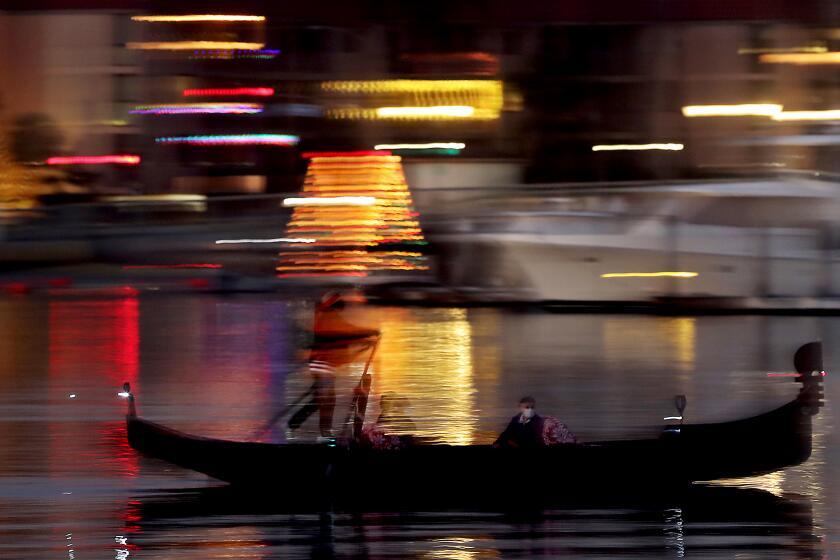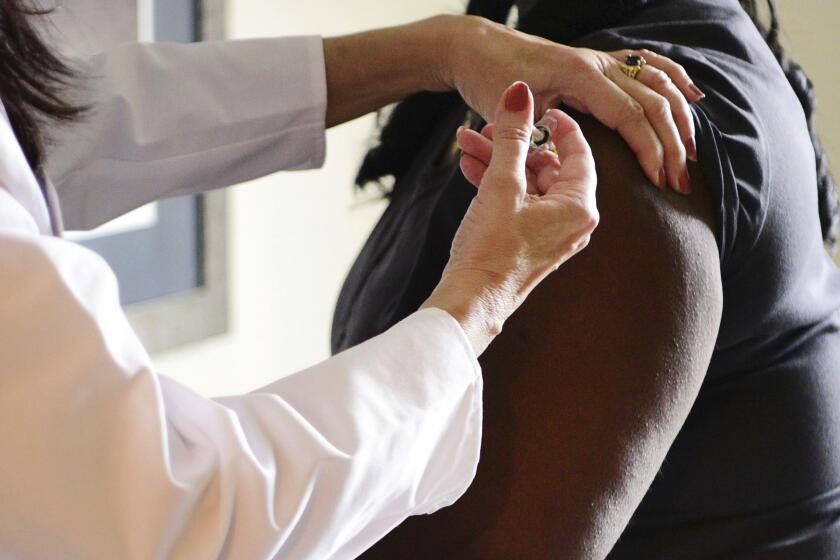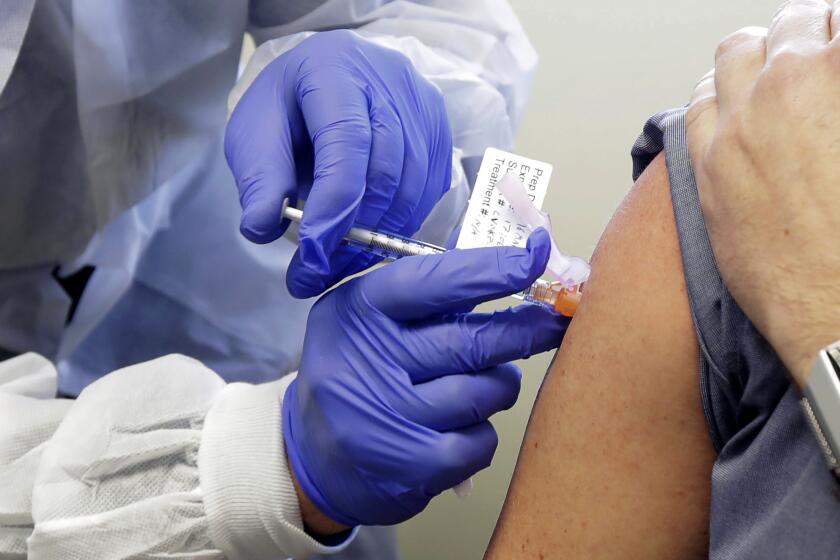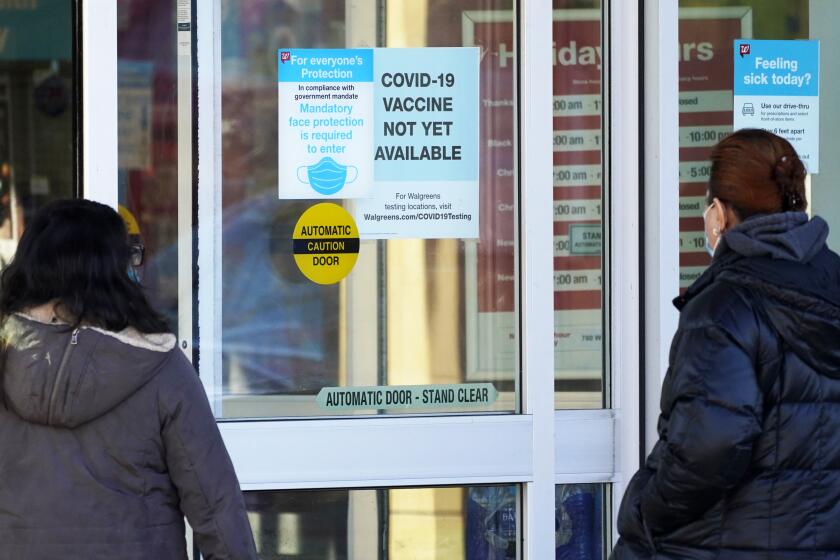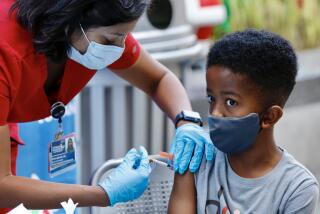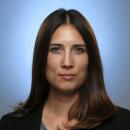Here’s how California plans to distribute the COVID-19 vaccine in coming weeks
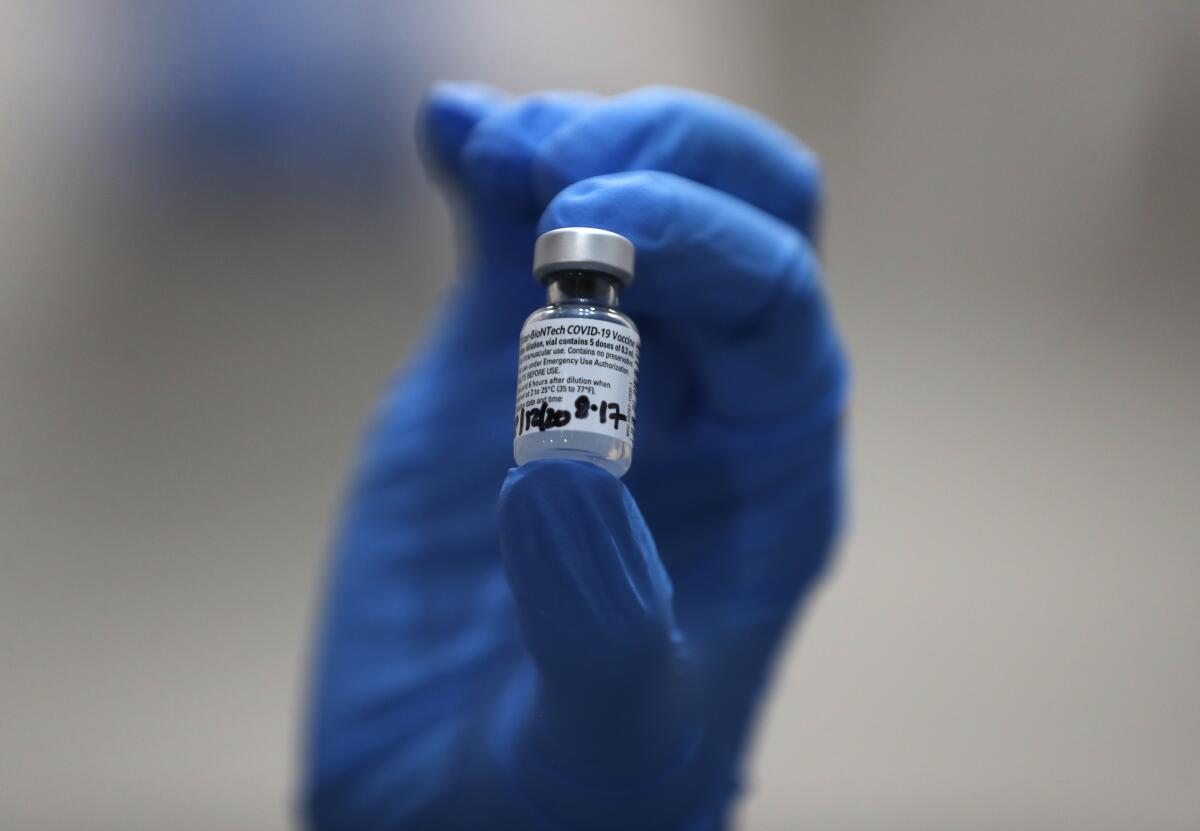
- Share via
With U.S. regulators expected to clear the way this week for the first COVID-19 vaccine, California could soon begin its historic and complex rollout of millions of immunizations, a much-anticipated turning point in a state where over 20,000 people have been killed by the virus.
Though it is unclear exactly when the U.S. Food and Drug Administration will grant emergency use authorization for the Pfizer-BioNTech vaccine, the move could come as soon as Thursday, Gov. Gavin Newsom said this week.
California’s first shipment of vaccines will include 327,000 doses — supplying 327,000 people with their first dose — and is expected to reach hospitals between Saturday and Tuesday, he said.
The vaccine requires two shots administered 21 days apart to reach the 95% effectiveness established in clinical trials. By the end of the year, California expects to have given the first dose of the vaccine to 2.16 million people who are in the group that’s first in line — healthcare workers, as well as residents of long-term care facilities. Follow-up doses will come in further shipments.
“Hope is on the horizon,” Newsom said.
The milestone comes as the state anticipates a deadly winter. Most Californians are under a stay-at-home order as the state logs record numbers of new COVID cases and some hospitals begin to run out of beds in intensive care units. Already this year, 1.4 million Californians have been confirmed to have contracted the virus and 20,464 have died, a figure that will only grow in the coming weeks.
Southern California and the Central Valley are by far the state’s biggest contributors of total COVID-19 deaths in the last week.
“The vaccine will not save us from this current national, state or local surge. Very simply, [there’s] not enough time,” San Francisco health director Dr. Grant Colfax said Wednesday.
Still, the emergency authorization of a vaccine represents a new phase of COVID-19, what some experts describe as the beginning of the end of the pandemic. On Tuesday, the United Kingdom became the first nation to administer the Pfizer shot to its healthcare workers and elderly.
In the U.S., a report by FDA staff released Tuesday confirmed that the Pfizer vaccine is highly effective and that there are no safety concerns that would prevent it from being granted emergency authorization. The findings set the stage for release of the vaccine this week and the immediate availability of 6.4 million doses nationwide, which will be distributed to states based on their populations.
Once the vaccines arrive in a state, they will be stored at locations that can accommodate the extremely low temperatures they require — the Pfizer vaccine must be stored at around minus 70 degrees Celsius (about minus 95 Fahrenheit). Among these facilities are Cedars-Sinai Medical Center, UCLA and UC San Francisco Medical Center.
But a very small number of people will receive the vaccine this year, with the initial shipment to California “likely to end up largely in hospital settings,” Dr. Robert Schechter, a medical officer with the California Department of Public Health, told participants in a vaccine advisory panel Wednesday. Priority will go to health workers most likely to be exposed to the coronavirus.
Vaccines administered to residents and staff of long-term care facilities through a federal partnership with CVS and Walgreens will probably receive a separate slice of California’s allotment, rather than some of the first batch of 327,000 doses, Schechter said.
Gov. Gavin Newsom has announced a stay-at-home order affecting most of California.
A second vaccine, created by the pharmaceutical company Moderna in partnership with the National Institutes of Health, could be granted emergency use authorization by the FDA within a week of the Pfizer vaccine, Schechter said. California expects at least 2 million doses of it by the end of the month and approximately 6 million by the end of January, he said.
Beyond the two groups already designated most vulnerable, California officials have not yet determined who will be next in line for vaccines. Industry groups have lobbied for early slots for law enforcement, long-term care workers, the meat and poultry industry, the metal can industry, farmworkers and more. For the general public not given special consideration, it will likely be spring or summer before vaccines are available, said UCLA epidemiologist Dr. Timothy Brewer. The initial allotment this year won’t even cover all 2.4 million healthcare workers in California, he said.
“If I were planning a wedding for next summer, I would plan it in a way so that everything is cancelable,” he said.
With COVID-19 vaccines on the horizon, the details of how most Americans will get their shots are still being worked out. Here’s what we know so far.
Brewer also said activities like nonessential travel may have to wait until after the summer depending on what’s learned in ongoing studies of the virus and vaccines. International trips could continue to pose risks longer, he noted, since other countries will need time to build up their vaccination programs, supply chains and infrastructure.
He said he anticipates the U.S. could reach herd immunity, with around 60% to 70% of the population vaccinated, by mid- to late 2021.
“I’m optimistic we will have a better Thanksgiving and Christmas next year than we did this year,” he said.
In L.A. County, the initial vaccine shipment will provide 84,000 doses of the Pfizer vaccine, which will be distributed to healthcare workers as soon as next week, said county Public Health Director Barbara Ferrer. A second shipment expected Dec. 21 will be used to immunize more acute-care hospital workers, as well as some staff and residents at skilled nursing facilities, she said.
“The supply of vaccine is expected to be limited, while the need will be high,” Ferrer told county officials Tuesday.
The goal is to vaccinate as many essential healthcare workers as possible in hopes of completing the first step of the county’s plan by January’s end.
Once those initial workers are vaccinated, the next task will be determining where the general public will be vaccinated.
During the 2009 H1N1 pandemic, the county set up temporary sites in various communities to rapidly vaccinate several people at once. But the Pfizer vaccine presents a logistical challenge the county hasn’t dealt with before because it must be kept extremely cold.
The county Department of Health Services — which operates four public hospitals and 27 clinics — recently bought eight subzero freezers that altogether can store more than 1 million doses.
The county’s Department of Public Health has also acquired eight subzero freezers, including three from the state. It will place them strategically across the county, which spans over 4,000 square miles.
As states frantically prepare to begin months of COVID-19 vaccinations, a new poll finds only about half of Americans are ready to roll up their sleeves.
Possibilities for vaccination sites include schools, libraries and clinics, as well as the coronavirus testing sites around Los Angeles.
The city testing sites run by CORE, an emergency relief organization that provides free testing, have already administered 9,000 flu shots since early October. And CORE has developed relationships in communities of color through church groups, nonprofits and local leaders, said CORE Chief Executive Ann Lee.
“We feel very strongly that not only because logistically we have this very well-oiled machine here, but also, I think the most critically important piece of it is, we have developed community trust,” Lee said. “A lot of people know these testing sites and are comfortable with them.”
Statewide, the facilities where COVID-19 immunizations will be given will vary by place, Schechter said. California’s 61 local-level health departments are considering which institutions will provide the vaccines, but the scarce early doses will probably be limited to clinics and local health departments with public health sponsoring, he said.
“As the vaccine becomes increasingly available, this will feel more and more like receiving a seasonal flu vaccine,” Schechter said.
Times staff writer Karen Kaplan contributed to this report.
More to Read
Updates
10:23 a.m. Dec. 10, 2020: This article was updated to clarify that the FDA is considering whether to grant emergency use authorization for the Pfizer and Moderna vaccines. COVID-19 vaccines are not being evaluated through the FDA’s usual approval process.
Sign up for Essential California
The most important California stories and recommendations in your inbox every morning.
You may occasionally receive promotional content from the Los Angeles Times.

